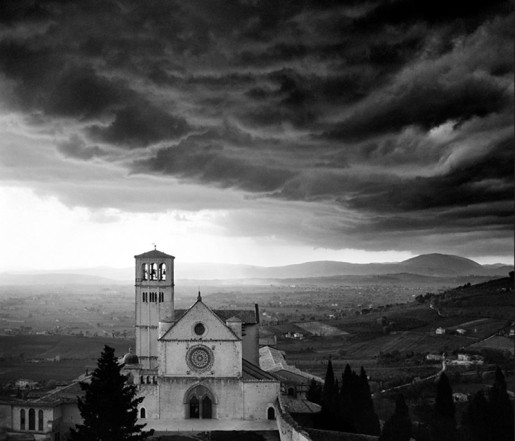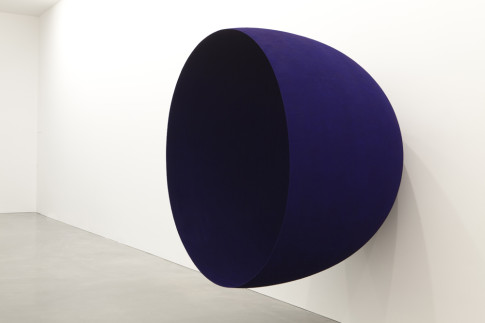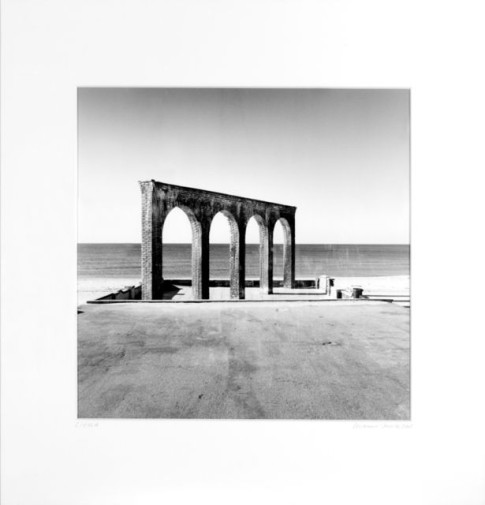
Elio Ciol
“The history of white people has led them to a fearful baffling place where they have begun to lose touch with reality – to lose touch, that is, with themselves… They do not know how this came about; they do not dare examine how this came about.”
James Baldwin
” A national culture under colonial domination is a contested culture whose destruction is sought in systematic fashion. It very quickly becomes a culture condemned to secrecy. This idea of clandestine culture is immediately seen in the reactions of the occupying power which interprets attachment to traditions as faithfulness to the spirit of the nation and as a refusal to submit.
… the oral tradition – stories, epics and songs of the people – which formerly were filed away as set pieces are now beginning to change. The storytellers who used to relate inert episodes now bring them alive and introduce into them modifications which are increasingly fundamental. There is a tendency to bring conflicts up to date and to modernise the kinds of struggle which the stories evoke, together with the names of heroes and the types of weapons. The method of allusion is more and more widely used. The formula ‘This all happened long ago’ is substituted by that of ‘What we are going to speak of happened somewhere else, but it might well have happened here today, and it might happen tomorrow’. The example of Algeria is significant in this context. From 1952-3 on, the storytellers, who were before that time stereotyped and tedious to listen to, completely overturned their traditional methods of storytelling and the contents of their tales. Their public, which was formerly scattered, became compact. The epic, with its typified categories, reappeared; it became an authentic form of entertainment which took on once more a cultural value. Colonialism made no mistake when from 1955 on it proceeded to arrest these storytellers systematically.”
Frantz Fanon
Mike King wrote:
“60% of working–class white Americans feel that racial discrimination against whites is at least as great as discrimination faced by racial minorities, according to a recent Public Religion Research Institute report. 49% felt that the government had done too much in recent decades to benefit the conditions of racial minorities, while 57% “agree that illegal immigrants taking jobs that would otherwise be filled by American citizens are responsible for our current economic problems.”
“What the stubborn persistence of aesthetic mimesis proves is not that there is an innate play instinct, as some ideologues would have us believe, but that to this day rationality has been never been fully realized, rationality understood in the sense of agency in the service of mankind and of human potentials, perhaps even of ‘humanized nature’.”
Adorno

RDC – Congo, Carl de Keyzer, photographer
This may seem an incongruous set of epigraghs, but I have been struck recently, repeatedly, by the reactions of the liberal and new sort of post modern left to the events in Ukraine, as well as to debates around multiculturalism. When I read that the problem isnt imperialism, but rather, that the real imperialism is actually anti imperialism, I begin to think such discussions are just crudely missing wider issues and questions. Questions having to do with how instrumental logic has infected culture. For indeed, from a purely formalist perspective, there is a glint of truth in how the default backdrop is western notions of civilization. However, nobody ever wanted to be slave.
And here mimesis enters the discussion. I return to this topic regularly, because I think its so crucial to understanding art and culture. And the thinker who most profoundly understood this was Adorno. For Adorno, mimesis is that component in aesthetic expression which remembers historical suffering, to sort of put it reductively. It is that dissonant memory fragment which resists affirmative corporate kitsch. The memory of suffering has an ideological role in refusing the false positivity of the Spectacle. And the expression of mimesis is often in subtraction, not addition. There is this whole strange tension between concept and mimesis. The point for the purpose of this posting is that concept in a sense supplants the mimetic, but then must, dialectically, incorporate another advanced level of mimesis into itself. As Adorno said, neither mimesis or the conceptual is sufficient unto itself. This is important for understanding, for intuiting, as both artist and viewer or reader, the importance of subtraction. This also touches on what I wrote last posting about Japanese aesthetics, and things like the tea ceremony. But more on that, I hope, in coming posts. The fact that the conceptual must re-introduce the mimetic means that a tension is sustained, not reconciled. What Adorno would call falsely reconciled. This is the province of Hollywood and kistch. The conceptual simply replaces the mimetic. Now, also, the mimetic is the realm of the Dionysian. It is the realm of the tragic reveal. The mimetic, however, is not a reflection or imitation of false reality. Its not an imitation of reality at all. It is an interior requestioning of those contours of memory that contain man’s suffering; mimesis is not real, but it is the repudiation of the false. It is not real, because there is no ‘real’. This is semantic to a degree, but it is also the causation driving creation of any kind. And in a way, Benjamin’s dialogues with Sholem always skirted around the Kabalistic taboos on graven images. Islamic art, too, approached this but, like Japanese aesthetics, via practive, and repetition. Not mechanical repetition, the neurotic compulsive, but the repetition which erases motive.

Anish Kapoor
Adorno worried that the growing hegemony of image manufacture, of narrative, was leading toward a shriviling up of the mimetic. That all that was being incorporated was another layer or register of reified social relations. This is where, for example, the left’s pro war consensus (well, not quite) is an instrumental logic that has removed the dialectical. The narrative is one dimensional but masquerading as complex. And here one might say, the colonial frame starts to poke through the thin membrane of liberal humanism that has kept it, in theory, out of sight.
“…the contemporary loss of any subjective capacity for experience is most likely identical with the tenacious repression of mimesis today.”
Adorno
Now, this eclipsing of the mimetic process by instrumental conceptualization has the additional effect of substituting a sadistic violence for practice. Without that mimetic memory, the instrumental repetition is neurotic and violent. This is Rumsfeld saying they are running out of targets to bomb. Saying it as if such a statement were not a clear sign of insanity. Today, narrative fiction increasingly conceptualizes experience. Hollywood TV and film relies on high concept projects. Theatre organizations will reward that which can display a clear “concept”, a clear meaning. So that the anti war play becomes a form of war itself. The anti racist melodrama ends up reinforcing a system that includes and creates racial inequality. This is not the same as the Zizekian formulas of false contrarity. For that narrative says, anti war is actually war, war is actually anti war. It does even rise to the level of erasing the mimetic, for it is no more complex than a set of Ikea instructions for putting a bed together.

Daniella Rossell photog; “Janita in her Father’s Office”.
There is something in the West today that is now completing what Adorno feared, I think. The compulsive reaching for recognition, for attention, is so pathological that it drives almost all mainstream media. The drive for money then, is both a drive for power, for control, really, and a need for imprinting this authority on history. It is a need, too, for recognition though. And this is an acute desire, now. Daniella Rossell’s photo series, focusing on young women of the Mexican ruling class, in which the participants arranged their own presentations, is only a lurid childish narcissistic version of various board room portraits. The cultivation of power is anti mimetic. Mimesis is suffering, and it is fraught with a certain caesura or gap in narrative. A certain eliptical unavoidable pause. Discussions of art today tend toward a fear of really exploring what certain effects represent. The elipse in narrative or dialogue, the pause in music, the enjambment in poetry… and maybe in a sense this really is linked to that Lacanian ‘stain’. But even if not, the disruption of rationality, the rationality of a false totality, is today a telling radical strategy I think.

Hiroshi Sugimoto
There is a pause, a silence, or a blank space that can open portals to the unconscious, in a sense. The ‘man without qualities’, the blank businessman, the emotionally dead soldier, the button downed cypher is another kind of blank. The former welcomes in, or allows the suffering its status, its memory. The latter is the denial of memory, or pain, and it is the sadistic fascist sensibility, which is no sensibility at all.
As Martin Jay put it, speaking of Adorno and mimesis; “..it could only be understood as comparable to a permanent allegory without symbolic reconcilliation”. This is the negative dialectic. One cannot today, under the hegemony of instrumental logic, purposfully create allegory, or even meaning. One must remove, and leave blank, silent, or empty. And one must practice to be quiet in this way. It is not the absence of noise or activity or image; it is the creation of “space”.
The fascist is always, and because of the desire for control, looking for absolute congruity between generalized reality and its narrative or depiction. But this is the story of western civilization in a sense. Certainly the story of the Enlightenment, as Adorno and Horkheimer drew it up. The non allegorical. The master narrative is completed. Always.
The ritualistic is, in a way, the preserving of the non identical. It re-enacts the lack of reconciliation.

Clegg & Guttman photog. The Board of Deutsche Bank.
If one examines the films being applauded this year, at least the ones from Hollywood, what you get are sentimentality (Nebraska, and Philomena, Dallas Buyers Club, etc), or jingoistic revisionist pro military and pro capitalism films like Captain Phillips or American Hustle, or Wolf of Wall Street). So, what is it, in any of these films, that people “like”? Well, mostly it is exactly the reconciliation with the false, the non allegorical. None of these films, and not the white savior Ayn Randian 12 Years a Slave, are even remotely engaged with real aesthetic choices. Not a single one. Not one. Zero. NONE. And yet, such is the destruction of aesthetic education that people “like” all the various products that put them further to sleep. Now, I digressed for a moment, because the chasm between films such as Philomena, or Dallas Buyer’s Club, and discussions of aesthetics at all, is very deep indeed. In a sense, the reclaiming of culture begins with the readniss to hate this junk. This culture of the West, circa 2014, is one that calls anyone with an opinion a “hater”. Films like Nebraska are worth hating. Captain Phillips is hateful shit. Why apologize for it. If you “enjoy” it, fine. Enjoy it, but hate it. Now, to return to the congruity of these false myths, it is occuring to me more frequently these days that the mimetic process, due to the ever withering sense of spirit and interiority, and of state controls, must look to realms outside traditional expressions of culture, and/or bring these realms of experience, or practice, to bear on art. Zoology, architecture, micro biology, boat building….quantum physics…whatever it is, the natural sciences at their origins. The crafts, at their originary place, their originary impulse, original curiosity.

Aristotle Onassis, leaving Opera.
Mimesis is today, in the age of the Spectacle, connected not to seeing, or feeling, or listening, but to dominating. And domination is that which is today serving the new rise, or return of, the colonial world view. To validate this colonial narrative, the history of human suffering must be forgotten. In other words, the mimetic is enclosed, and stopped. Reification is valorized in all sentimental narrative and image. The very use of the word “like” tends toward the reified. Domination is a form of not-seeing. Domination is blind action.

Daan Van Golden
One of Adorno’s late concerns was with what Robert Kauffman called a “reductionist left ideology-critique that finds its raison d’etre in ritual demystifications of artistic illusion, in triumphalist revelations of artworks’ sociohistorical determination.” This discussion is found in a radio address Adorno made in the 1950s in the Federal Republic of Germany. And the topic was actually lyric poetry. My point here is that one of the problems with leftist engagement with culture in general has been to demystify, which while important, and often cogent and necessary, has tended toward a cynicism. That cynicism has too often been put in the service of what is really not leftist ideological argument at all, but actually a deeply reactionary reinforcement of white Anglo Imperialist privilege.
Even the best leftist quasi sociological critique of art often veers off into a totalizing and blanketing policing of taste. An attack on the very belief in the importance of culture. Often this includes an assumption that ‘culture’ must mean Western culture. Which takes me back to the Marx quote at the top. Now Adorno believed that no sociological conceptualizing can be applied to artworks unless it is born of the artwork itself. This would depend, I suspect, on the medium, but for the moment, the point is that the ideological implications are discovered after a submission (Adorno’s word, interestingly) to the material. Adorno famously said, “artworks give voice to what ideology hides”. The point is really that too often in terms of art and culture the left has tended to belabor isolated ideological interpretations, at the expense of wider and deeper utopian meanings.
It is of course true that as the mimetic shrivels up, as interior life is ever more colonized by mass media and the Imperialist state, that such belabored positions are usually correct. The problem is, not always, and those special cases are deserving of attention. And this has largely been the engine behind my writing this blog, however successful or unsuccesful I might be.

Mimmo Jodice
However much Adorno decried mass culture, and engaged in, himself, attacks on bourgoise culture, he remained convinced of the transcendent potential of art. This came to mind this week, as I was reflecting on the inconceivable and almost macabre transformation of social critics such as Richard Seymour, from relatively insightful and reliable (if Trotskyist) political commentator, into corporate tool. Or the various pro interventionist faux leftists and as I happened to be reflecting again on the racism of U.S. culture and the ongoing hunger strike by Georgia State convicts.
http://blackagendareport.com/content/striking-ga-prisoners-name-names-allege-sexual-abuse-ongoing-threats-maltreatment-staff
I thought about the default hostility on the left toward Cormac McCarthy, as I happened upon this piece…
http://www.counterpunch.org/2014/03/17/the-latecomer/
and this paragraph in particular:
“In the Judge’s vocabulary, the word “war” refers not only to human conflict, but in a more general sense to the passage of time, time which gives birth and deals death, clearing the ground for new creation. In this sense, time in McCarthy’s novels is not so much historical time as glacial or geological time, an arc the curve of which cannot be measured by any human means and certainly not by rational calculation.
‘Along the face of the stone bluffs were old pictographs of men and animals and suns and moons as well as other representations that seemed to have no referent in the world although they once may have. He said in the sun and looked out over the country to the east, the broad barranca of the Bavispe and the ensuing Carretas Plain that was once a seafloor and the small pieced fields and the new corn greening in the old lands of the Chichimeca where the priests had passed and soldiers passed and the missions fallen into mud and the ranges of mountains beyond the plain range on range in pales of blue where the terrain lay clawed open north and south, canyon and range, sierra and barranca, all of if waiting like a dream for the world to come to be, world to pass’. (The Crossing, p. 135.)”

William Wendt
McCarthy is accused of being overly masculinist, or just ornate, and recently often accused of racism. I found the same response in a way to True Detective. Not that I’m really comparing McCarthy to HBO, but the knee jerk hostility was interesting, and in places coming from the same people who ‘liked’ Captain Phillips or 12 Years A Slave. One does not write lines like those above, from McCarthy, without a practice. Maybe some of my appreciation for McCarthy has to do with my being a Westerner. With having grown up on the Pacific coast, and in the deserts and the dried shrubs and fires and endless roads to nowhere.
Adorno valued the idea of the spontaneous, and valued in it in writer or artist as well as in audience or reader. That previously hidden truths about history and society are revealed. Today I feel that writers often re-write with a desire to polish and make attractive, not to deepen — either the world or the work. They re-write to pin things down. Revising as if washing your car’s interior. The pursuit of something that lies outside the rational, or logical, is rewritten OUT. For that is the impulse. Improve the product. Research and testing, to find the perfect user-friendly model. It strikes me McCarthy, even in light of his current quasi popularity, never feels rewritten. I am certain it is, and there are even examples of his first drafts around, and it seems what he does is to erase the emotionally hysterical passages, but still, this seems different, of a different character. For writers such as McCarthy, the reworking is to say with more clarity, what drove the image or sentence. For many writers, I feel the reworking is to obscure the first choice. The first choice is too close to the Id. Rationalize. Rewriting should not be rationalization. In McCarthy the narrative careens forward, directionless as his character’s lives. There is something serious in McCarthy. And sincere. That quality of seriousness is hard to define, or even explain. Part of it is the fact that psychology has no motive force.
John Sepich writes of McCarthy;
“[t]he landscape of McCarthy’s Southwest
is composed not only of deserts and mirage effects, but also of heavenly
phenomena. The novel begins and ends on nights of meteor showers. It
is the sun that powers the book’s hallucinatory mirages.”
Blood Meridian has no real plot. It is a story, though. And it resembles something that can be traced back to, if not the oral tradition, at least the inherited myths of something that ‘once had meaning’. It is a long meditation not on violence, but on white men infecting the natural world. And for all the complexity of the syntax, subtraction remains a guiding principle of this prose.

Edward Burtynsky, pivot irrigation, Yuma Arizona
So, finally, I might make the argument that large chunks of the public today approach popular culture from the point of view of producers. It is more fun to imagine the box office than to actually engage with the story. They approach museum or gallery art, and serious work in general, whatever that means, from a sociological perspective that by default puts them in the managerial subject position. All of this can be related to things gone over many times before, and for almost sixty years. What is happening now, however, is this instrumentalized new racism, the instrumental white manufacturing of a post modern identity. There are works worth reading, or seeing, and a few films being made, but it strikes me that there is a correlation between corporate rounding off of corners, and leftist ideological fixations, at the expense of form, and this new colonial white snark. As I watched Fruitvale Station, I kept thinking, this is a white film. Its a white film made by black filmmakers and produced with at least some black money. (Maybe no money is black but thats another discussion). And yet, so deeply imprinted are certain editing rhythms, certain camera positions, that it resembles those first generation writers from previously colonial countries, writing in the language of the colonizer. It ends up, always, or almost always, the colonizers story.
How does one ‘like’ Nebraska? Why do so many critics want to defend work like Zadie Smith or Jonathan Safran Foer? Or the films of director Darren Aronofsky? Why? Aronofksy, the theoretical in-house Hollywood radical has a film coming out called Noah, about, yeah, the dude in the flood. Russell Crowe and lots of CGI water I guess. Why in the fuck does ANYONE look forward to seeing this?
There was a good article, review, in the NYRB this month, about commercial shipping. I add the link, for this piece certainly reflects my limited experience with docks and ports and commercial trade. http://www.nybooks.com/articles/archives/2014/apr/03/passage-hong-kong/?page=1 And it speaks to what writers like Conrad understood over a hundred years ago, and what others like Robert Stone grasped half a century later.

Glenn Brown

Rodolpho Morales

And, right on cue to illustrate your point(s):
http://www.nytimes.com/2014/03/23/magazine/what-pakistan-knew-about-bin-laden.html
The level of bad faith in that thing is so high… it’s surreal.